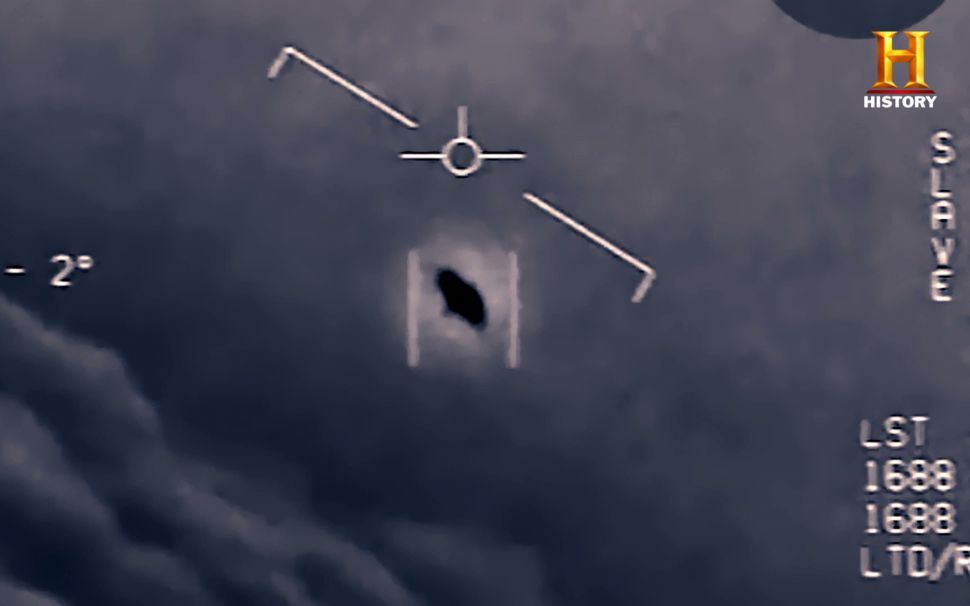Former Head of Pentagon's Secret UFO Program Has Some (Strange) Stories to Tell
The former leader of the U.S. government's top-secret UFO program has stories to tell, and he is sharing some of them for the first time in a new documentary.
Intelligence officer Luis Elizondo served as the former director of the Pentagon's Advanced Aerospace Threat Identification Program (AATIP), an initiative launched in 2007 to study reports of UFO encounters. Elizondo departed the agency in 2017; that year, he spoke with reporters at The New York Times, confirming the existence of the shadowy agency and describing its mission.
Now, Elizondo is pulling back the curtain on his tenure with the AATIP, which he left because of a lackluster official response to the agency's findings, and their unwillingness to address potential risks from UFOs, according to the new show "Unidentified: Inside America's UFO Investigation," premiering May 31 on the History Channel at 10 p.m ET/9 p.m. CT.
Related: UFO Watch: 8 Times the Government Looked for Flying Saucers
No, there isn't a big reveal that UFOs were alien spacecraft all along. But delving into long-hidden accounts of UFO investigations will hopefully encourage people — and authorities — to overcome long-standing stigmas and talk more openly about these mysterious aircraft, some of which may pose a bigger threat than we realize, Elizondo told Live Science.

UFOs have perplexed and fascinated people for decades; they also pose a unique challenge to federal agents trying to determine if they represent a threat to national security. Before AATIP, the U.S. Air Force had launched Project Blue Book, which investigated more than 12,000 purported UFO sightings from 1952 to 1969.
During Elizondo's tenure at AATIP, observers reported UFOs flying at hypersonic speeds — more than five times the speed of sound. Yet there were none of the signatures that usually accompany aircraft flying at such fantastic speeds, such as sonic booms, he said.
Breaking space news, the latest updates on rocket launches, skywatching events and more!
The UFOs were also unexpectedly mobile, traveling so fast that they would have experienced gravitational forces, or G-forces, that far exceed the limits of endurance for both humans and aircraft. The F-16 Fighting Falcon aircraft, one of the most maneuverable in the U.S.'s arsenal, reaches its limit at around 16 to 18 G's, while the human body can withstand about 9 G's "for a very short time" before a person would start to black out, Elizondo said.
"These things that we were observing were pulling 400 to 500 G's," he said. "They don't have engines or even wings, and they are able to seemingly defy the natural effects of Earth's gravitational pull."
Some of the UFO sightings reported to AATIP were eventually resolved, as aerial drones or test firings of new types of missiles that were spotted from an unusual angle. But while many astonishing UFOs still defied explanation, there simply isn't enough evidence to suggest they belonged to extraterrestrials, Elizondo added.
However, another possibility is even more unsettling than the prospect of an alien invasion: that a foreign adversary had secretly developed technologies that are "strategic game-changers," unlike anything ever seen before, he said. Addressing that potential threat is a necessary step that government officials — even those that supported AATIP — don't take seriously enough, according to Elizondo.
What's more, the entrenched secrecy shrouding official UFO investigations only reinforces the association of UFOs with "tinfoil hats and ridiculous stories."
"We trust the American people to know that North Korea has nuclear warheads pointed at Los Angeles, yet we don't trust them with the knowledge that there's something in our skies and we don't know what it is? That seems counterproductive to me," Elizondo said.
Editor's Note: This story was updated with the correction that Luis Elizondo left the Pentagon in 2017, not 2011.
- 7 Things Most Often Mistaken for UFOs
- 9 Strange, Scientific Excuses for Why Humans Haven't Found Aliens Yet
- 13 Ways to Hunt Intelligent Aliens
Originally published on Live Science.
Join our Space Forums to keep talking space on the latest missions, night sky and more! And if you have a news tip, correction or comment, let us know at: community@space.com.


